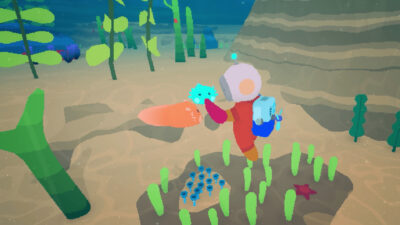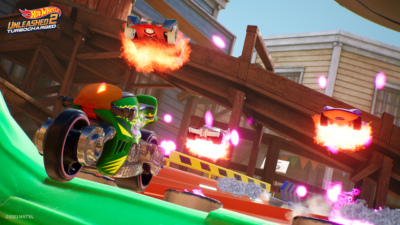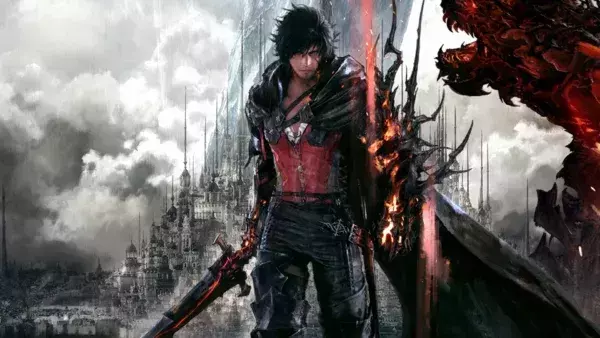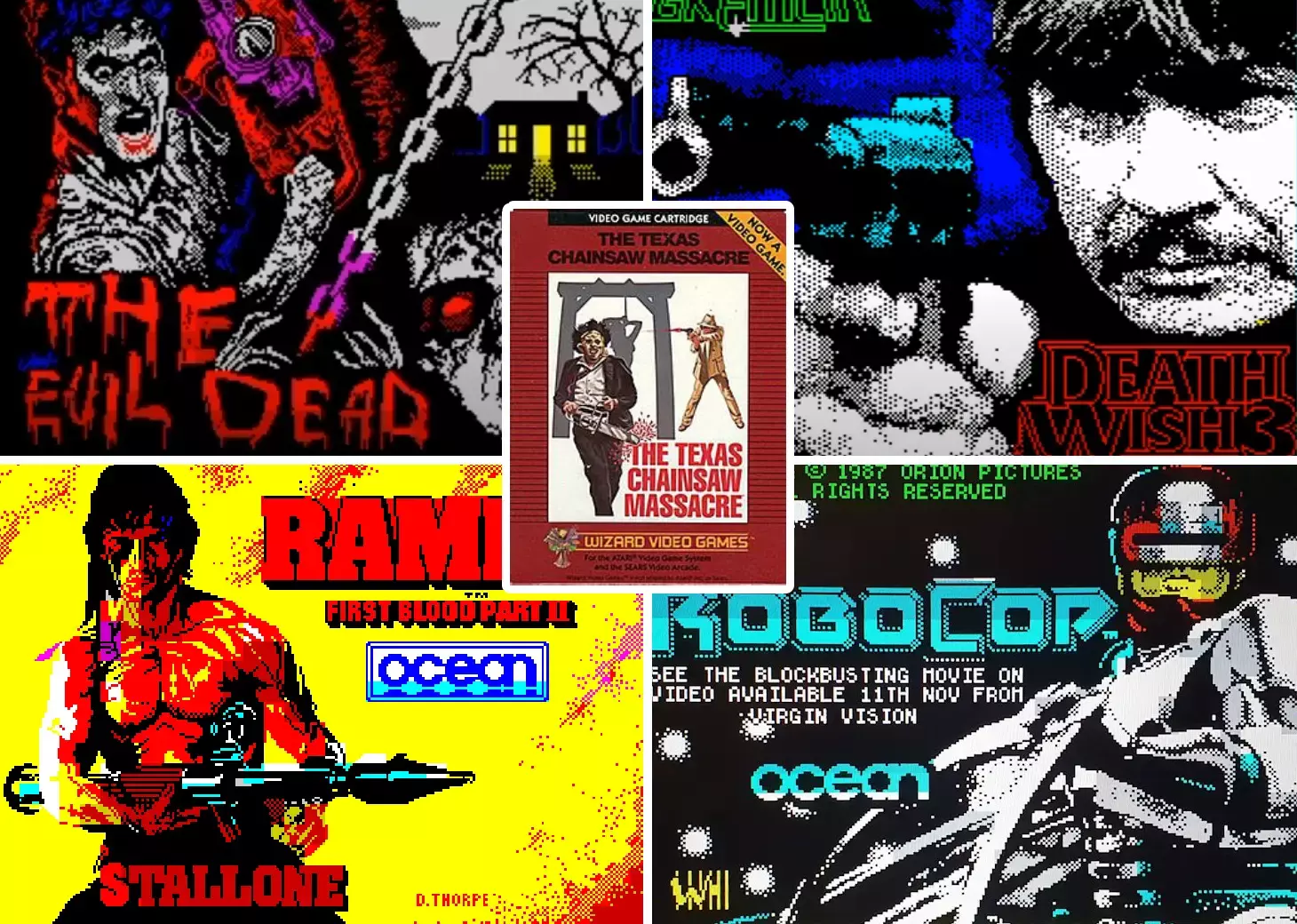
Throughout the 1980s, 18-rated films were commonly made into games, released unrated, and enjoyed by kids of all ages. Obviously, it couldn’t last forever.
If you were a child in the 1980s and your parents didn’t want you to see 18-rated films like RoboCop, Death Wish 3 or Rambo: First Blood Part 2, there was a second option: you could play their related tie-in video games. Because, in a curious quirk of history, some of the decade’s most bloodthirsty movies were frequently licenced and adapted into games – and in the 1980s, none of them came with any kind of age rating attached.
The earliest official movie tie-ins emerged in the United States. Raiders of the Lost Ark and E.T.: The Terrestrial were among the first, both released for the Atari VCS (later 2600) console. With their blockbuster licences purchased from Hollywood studios for millions of dollars, Raiders and E.T. were designed to be breezy adventure games that could be enjoyed by all the family – though E.T. soon became infamous as a rushed release that contributed, in a roundabout way, to a video game crash that swept across America in 1983.
It didn’t take long, though, for more violent movies to be adapted into video games. Wizard Video Games, a label set up by producer Charles Band, was designed to complement his own Wizard Video, which specialised in releasing such infamous genre films as I Spit On Your Grave on VHS. In its short lifespan, Wizard Video Games released two titles for the Atari VCS – Halloween and The Texas Chainsaw Massacre – both based on horror films of the same name.
The games seemed tailored to cause controversy, particularly The Texas Chainsaw Massacre, which cast players in the role of the film’s rampaging antagonist, Leatherface. With chainsaw in hand, the player was free to move around the screen, hacking up victims left and right. The Atari 2600’s meagre hardware left little room for graphic detail, but the troubling premise wasn’t lost on critics of the time. In an October 1983 edition of US magazine Electronic Fun with Computer Games, reviewer Mark Tost wrote, “If you find the casual discussion of murder and bloodletting disconcerting, this is not the game for you. If you do like this type of thing, we don’t want to meet you in a dark alley.”
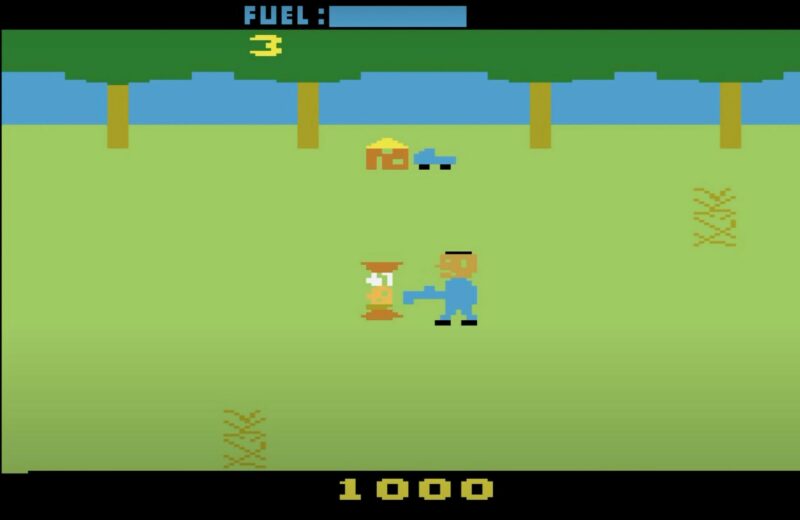
Abstract violence in The Texas Chainsaw Massacre on the Atari 2600.
If the makers of The Texas Chainsaw Massacre thought they’d sell millions of copies through controversy alone, they were mistaken. Stockists across the US refused to sell the game, while the above-mentioned video game crash – caused in large part by the wave of tawdry third-party titles flooding the Atari 2600 market – saw Wizard Video Games close a few months later.
(For his part, programmer Ed Salvo once admitted that he “really didn’t want to” make The Texas Chainsaw Massacre. It was, he said, cobbled together in six weeks because he “had to eat.”)
Over in the United Kingdom, games based on violent movies continued where The Texas Chainsaw Massacre left off. Just one year after the release of that game, British publisher Palace Software started to publicise The Evil Dead – an adaptation based on Sam Raimi’s infamously gory 1981 horror flick.
Like Wizard Video Games, Palace Software had connections to the film industry – it was part of the same group that also owned Palace Video, the firm that released The Evil Dead on VHS in 1983. That film was subsequently swept up in the ‘video nasty’ furore that made British headlines in 1984 as movies considered likely to “deprave and corrupt” were banned – copies still in circulation were confiscated by police in a series of high-profile raids on video rental stores. The Evil Dead therefore found itself on a list of movies that also included Cannibal Holocaust, I Spit on Your Grave and, thanks to an infamous mix-up, The Best Little Whorehouse in Texas, starring Dolly Parton.
Given that Palace Software was on the cusp of releasing a video game tie-in for a banned movie in the spring of 1984, it’s understandable that the company’s founder, Peter Stone, was quite strident about the game’s content at the time.
“While The Evil Dead computer game is a horror game, we have gone out of our way to make sure there is nothing nasty about it,” Stone told Popular Computing Weekly magazine. “And it certainly doesn’t set out to deprave or corrupt – far less, in fact, than other forms of media – comics, for example. In the game you have to defend yourself against some rather friendly-looking ghouls. I don’t think there will be any controversy about it when people see the game.”
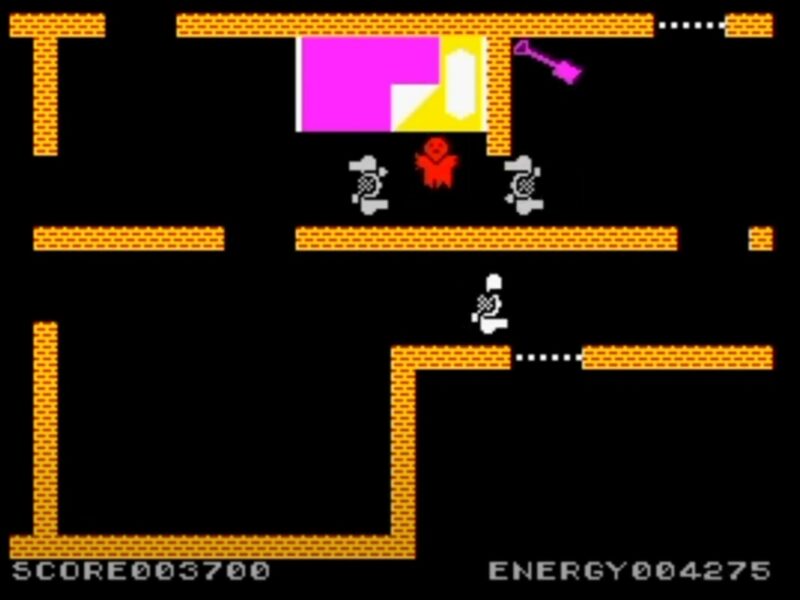
The Evil Dead boiled Sam Raimi’s antic horror into a top-down maze game about shutting windows.
The wider games industry had another reason to be nervous, too. The same magazine article reported that “The release of the Evil Dead computer game comes at a time when parliament has broadened the scope of the Bright Bill – designed to curb video nasties – to include video games.”
In theory, this would have meant that any games containing “acts of gross violence,” would have to be submitted to the British Board of Film Censors, as the BBFC was then still called. Peter Stone certainly didn’t agree with the move. “Where do you draw the line?” he said. “Is Space Invaders an act of gross violence? The problem is that the people pushing through these laws have no idea what the video and computer games industries are about.”
Fortunately, Stone – and anyone else who disliked the idea of the games industry getting its own equivalent of the BBFC – was in luck: as we’ll see later, the rule that developers should submit their violent games to the ratings board was never enforced.
Not that any of this made much difference to The Evil Dead video game; a planned launch event at the London Dungeon ended in disaster when it emerged that the game’s discs contained a bug, and the ZX Spectrum version was eventually bundled with another Palace Software title, Cauldron, released in 1985. Reviewers ultimately noted that Peter Stone’s earlier claims The Evil Dead wasn’t particularly “nasty” were correct – it was essentially a top-down maze game, with little of the original film’s violence.
(In another curious parallel with Wizard Video Games, Palace Software had planned to follow The Evil Dead with its own licenced games based on Halloween and The Texas Chainsaw Massacre. Neither venture would pan out.)
The Evil Dead game’s comparatively tame action – where you could bloodlessly dismember Deadite corpses – spoke to the limitations of early-1980s home computers. Although licenced games based on everything from Rambo: First Blood Part 2 to Oliver Stone’s war-is-hell Vietnam flick Platoon contained high body counts and lots of shooting, systems like the ZX Spectrum and Commodore 64 were too primitive to render violence as explicitly as it was depicted in the original movies.
This meant that, when Ocean Software put out a video game based on the ultra-violent RoboCop in 1988, parents barely seemed to bat an eyelid. The game showed its cyborg law enforcer blasting hoodlums with his futuristic pistol, but as programmer Mark Lamb once lamented, the ZX Spectrum’s technical limitations made it impossible to depict the film’s grisly deaths.
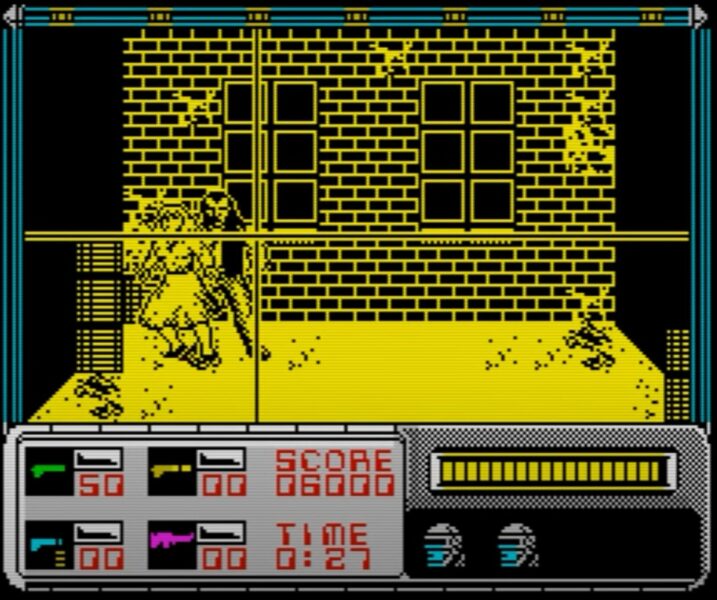
RoboCop recreates several memorable scenes – sans the gore – from Paul Verhoeven’s film.
“We were really short of memory,” Lamb told Eurogamer in 2014, “so I had to do things such as make random masks for the dying baddies. They basically dematerialised like they’re being beamed up in Star Trek because we didn’t have room for any further animation.”
In that same article, John Meegan, programmer of the Commodore 64 version of RoboCop agreed that there was “never much discussion” about the depiction of bloodshed, because “in those days violence was very abstract.”
“I think we might have wondered about replicating the scene where the guy gets shot in the groin by RoboCop,” said Lamb. “Now I think about it, if we could have made the game more violent, we probably would have!”
Gary Bracey, the Ocean Software co-founder who managed to buy the RoboCop licencing rights in the first place, denied that the game was ever going to reflect the film’s more adult tone, meanwhile. “That was never going to happen,” he said. “We perceived RoboCop as a game for everyone, even if the younger audience were unable to actually view the R-rated movie!”
RoboCop certainly looked tame compared to the violence and sleaze depicted in 1987’s Death Wish 3. Following the premise of the Michael Winner-directed film released two years earlier, it saw vigilante Paul Kersey take to the streets of New York in a bullet-strewn running battle against local gangs. Players were free to blow up villains and innocent bystanders alike with a range of guns and rocket launchers – the latter leaving Kersey’s victims in a pink jumble of blood and body parts. Seemingly oblivious to all the chaos, sex workers are also seen trudging around the streets, occasionally tugging at their skirts in a faintly disturbing manner.
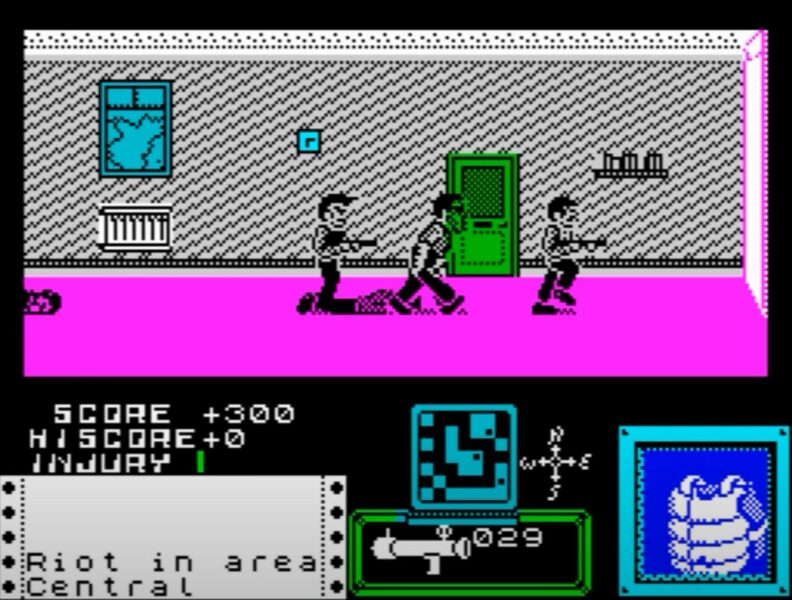
Gun violence and urban malaise in Death Wish 3.
Death Wish 3 was generally well-received by critics at the time (“This game of the film raises computer-screen gore to new heights,” wrote ACE magazine), though even its admirers commented on its potentially controversial imagery. “No doubt others will pass judgement… probably without seeing it first,” Computer & Video Games wrote in its review. “So, all I will say is that it’s an excellent game that is shockingly realistic!”
By 1988, some video game journalists began to wonder whether developers were getting a bit carried away with all the bloodshed. In a February article entitled Are These Games Illegal?, ACE magazine decided to find out how such games as Palace Software’s Barbarian (with its scenes of decapitation) and Death Wish 3 would be rated by the BBFC.
The outlet noted that the 1984 Video Recordings Act excluded video games from its purview, unless they depicted “gross violence towards humans or animals.” In theory, Death Wish 3, Barbarian, and other games like them should have been submitted to the BBFC for an age rating.
Keen to learn more, ACE’s reporter met with the BBFC’s then-secretary James Ferman. Armed with some video recordings of the aforementioned games’ action, ACE asked “whether the games should have been submitted to the BBFC, and – if they had been submitted – what kind of certificates they would have got.
Incredibly, Ferman described the games as “storybook violence”, though he conceded that both Barbarian and Death Wish 3 should have been submitted to the BBFC before release. Had that happened, Ferman suggested the games would have been rated PG, “which means that although parents might not wish their children to see it, those children would not be prevented from buying the game in a shop.”
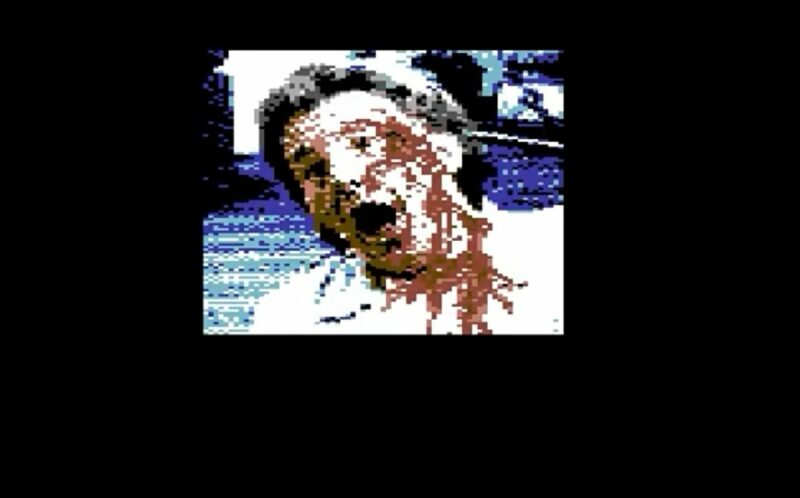
As ACE magazine pointed out, developers who thought their games were too graphic were meant to submit their games to the BBFC for a ratings review before release. In reality, only one company bothered to do this – CRL, with its games Dracula and Jack The Ripper (pictured).
Death Wish 3’s violence may have been “storybook” by Ferman’s estimation, but ACE’s reporter was shrewd enough to sense change in the air: computers like the ZX Spectrum or Commodore 64 may not have been capable of displaying violence in detail, but the next generation of hardware “certainly will”, they wrote. Sure enough, 1992 saw the release of Night Trap and Mortal Kombat, whose full-colour, digitised graphics and more adult imagery sparked a Congressional hearing in the US.
By September 1994, the Entertainment Software Rating Board (ESRB) was set up in order to assign age ratings to video games. That same year, the UK’s Video Standards Council was ordered to start applying age ratings to this country’s video games. Its rating system, named ELSPA (after the Entertainment and Leisure Software Publishers Association) ran for 10 years, when it was replaced by the PEGI (Pan European Game Information) standard still in use today.
The 1990s still saw its share of licenced games – ranging from Demolition Man to Timecop to The Crow: City of Angels – though the results were often rushed and critically panned. Only the odd standout, like Rare’s pioneering GoldenEye 007, stood as a reminder of the 1980s, when tie-in games were frequently well-reviewed and hugely popular. RoboCop, for example, was reportedly the first ZX Spectrum game to sell over a million copies.
The tie-in games of the 1980s were therefore a unique by-product of their time: an era when violent films were at least slightly harder to access, and when video games based on them were released with barely any scrutiny. If you were too young to see RoboCop: the movie, you could still enjoy the thrill of blowing away low-resolution goons in RoboCop: the game. At the time, it felt like a more than worthy substitute.
A version of this article first appeared in Film Stories magazine.


